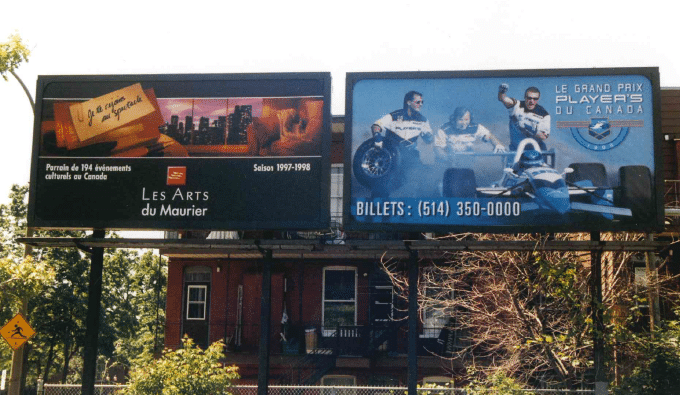Sponsorship History Part 4: Evolving Landscape – The Shift in Major Sponsorship Categories from Tobacco to Crypto

This installment concludes our series on the history of sponsorships. For insights into earlier developments, refer to Part I, which delves into the foundations of brand partnerships, Part II’s exploration of sponsorship emergence, and Part III on modern sponsorship’s advent.
Throughout the 1990s and into the new millennium, dominant sponsorship categories have shifted significantly, notably from industries like tobacco to emerging sectors such as cryptocurrency.
Tobacco: The Collectible Era to Regulatory Crackdown
Dating back to the late 19th century, tobacco advertising played a crucial role in the popularization of sports cards, serving as an ingenious marketing strategy. The American Tobacco Company led the charge, producing the T206 baseball card series in 1909, which featured over 500 major league players. The tactic quickly expanded to include cricketers, track and field athletes, skiers, and boxers.
The 1990s marked a golden era for tobacco sponsorships, as companies circumvented tightening advertising restrictions by redirecting their marketing budgets into brand partnerships across a wide range of properties and events. For example, Canadian tobacco expenditures soared from $10 million in 1987 to $62 million by 1995. During this time, tobacco companies became prolific sponsors in the sports and entertainment sectors, through partnerships with comedy festivals, jazz events, fireworks competitions, and professional sports, including motor racing, Major League Baseball, the NFL, and the NBA. Notably, the NHL had banned in-venue tobacco sponsorships since 1981. In 1994, RJ Reynolds disclosed that they sponsored 2,736 sporting events annually, contributing significant revenue to various entities.
Formula 1 and Tobacco’s Legacy
The partnership initiated in 1968 between Team Lotus and Gold Leaf revolutionized Formula 1, introducing corporate branding that strayed from traditional national colors. This paved the way for the iconic Marlboro and Scuderia Ferrari collaboration in the 1970s.
Tobacco sponsorship in Formula 1 has seen a gradual phase-out since the late 1990s and early 2000s, largely due to legislation. However, there wasn’t a single, global end date for tobacco sponsorship across all teams and races, as the regulations varied significantly by country, leading to a patchwork of rules that teams and sponsors had to navigate. Despite these bans, some teams continued to display tobacco branding in countries where it was still legal to do so, up until the mid to late 2000s.

It’s worth noting that while overt tobacco advertising has largely disappeared from F1, some companies have remained involved, such as Philip Morris International (PMI) with the Ferrari Formula 1 team via their “Mission Winnow” initiative, which aims to promote the company’s move towards smoke-free products, and British American Tobacco (BAT)’s sponsorship of McLaren via their “A Better Tomorrow” campaign, centered around non-tobacco products.
The Inevitable Decline
The global realization of the health implications and associated medical costs of smoking instigated widespread government action. Canada was one of the first countries to ban tobacco sponsorship in 2003, followed by Europe in 2005.
With the restrictions of tobacco sponsorship, the entertainment industry experienced a financial pinch, necessitating a reevaluation of funding models and increased government support for arts and culture. This transition coincided with the tech boom and the telecom industry’s rise in the sponsorship arena.
Telecommunications and the Great Consumer Grab
The early 2000s marked a significant turning point for telecommunications companies, as the widespread adoption of cellphones propelled them to the forefront of global corporate giants. Companies like AT&T and Sprint not only climbed the Fortune 500 rankings but also engaged in intense competition for market share. Sponsorship became a crucial tactic in their strategies.
The level of sponsorship investment was remarkable. By 2013, leading U.S. companies including AT&T, Verizon, Sprint, and T-Mobile were investing a combined total of more than $415 million in sponsorships. AT&T, the most lavish spender, allocated over $165 million to sponsorships, with almost 60% directed at sports and 14% at festivals.
These sponsorship initiatives were multifaceted, going beyond brand promotion to facilitate direct engagement with consumers through on-site mobile phone subscription sales. They also sought to enhance the fan experience by upgrading venue services, as seen with AT&T Stadium boosting its cellular capacity by 50%.
Securing exclusive rights was a strategic focus. Verizon’s billion-dollar agreement in 2011 for mobile streaming rights to NFL games was a game-changer. Similarly, T-Mobile and MLB, as well as Sprint’s partnerships with NASCAR and the NBA, were calculated moves to differentiate these companies through unique content and exclusive customer benefits.
Today, while telecom firms remain players in the sponsorship field, the landscape has evolved from what might be considered their ‘golden era’ of sponsorship activity. As the market reached saturation and financial conservatism took precedence, the dynamics of sponsorships in this sector shifted, paving the way for different industries to take the spotlight in the evolving world of corporate sponsorships.
Beer as Image Marketers
The 1990s saw intense competition among beer brands, as each sought to establish a distinct position and voice.
Heineken’s Olympic sponsorship journey began at the Barcelona 1992 Olympic Games. The brand established the Holland Heineken House as a meeting place for Dutch athletes and fans, a concept that lasted through both Summer and Winter Games, concluding after the 2018 Olympics in Pyeongchang.
Simultaneously, Corona delved into motorsports, becoming a key sponsor of the World Superbike Championship from 1998 to 2007. It also increased its presence in the Champ Car World Series in 2004, sponsoring the Bridgestone 400 presented by Corona.
Anheuser-Busch, the giant with nearly half of the U.S. market share, operated with an advertising budget that eclipsed its competitors. Its vast sponsorship portfolio included 90% of professional U.S. sports teams and 25 consecutive Super Bowls, delivering some of the most memorable commercials at the millennium’s turn.
While beer brands remain prominent in the sponsorship arena, there has been a strategic pivot from solely building brand image to enhancing sales and promotional activities resulting in a focus on negotiating pouring rights agreements.
There is speculation that beer and spirits sponsorships in sports might face regulatory restrictions. Recent announcements of major sponsorships for alcohol-free beer variants suggest these are here to stay. The non-alcoholic beer market, valued at over USD 22 billion in 2022, is expected to grow at a compound annual growth rate of over 5.5% from 2023 to 2032, potentially reaching an estimated USD 40 billion by 2032.
Aviation and the Rise of Gulf Airlines
Starting in the 1990s, airlines embraced sponsorship strategies to elevate global awareness, enhance their public image, and engage specific customer demographics.
Gulf state carriers soon harnessed the power of global sponsorship to extend their reach and bolster their high-end branding. Emirates led the charge among Gulf airlines, launching its sponsorship journey with a Dubai powerboat race in 1987. This early initiative set the stage for an expansive sponsorship portfolio encompassing sports teams and events across football, tennis, motorsports, and horse racing. Notable partnerships include marquee football clubs like Arsenal, Paris Saint-Germain, and Real Madrid.
Qatar Airways and Etihad Airways, too, have made substantial inroads into football sponsorship, aligning with prestigious entities such as FIFA and Manchester City. Notably, the 2011 deal between Etihad Airways and Manchester City, valued at approximately £400 million (around $480 million), was heralded as the sports industry’s most significant for nearly a decade.
Airlines remain at the forefront of sponsorship, with the industry amassing $737 million in active deals in 2021, continuing to leverage these partnerships to enhance their competitive stature in the global marketplace.
Gaming and Gambling
Until 2018, sports betting was largely illegal, except in specific regions like Nevada. In this restrictive environment, fantasy sports platforms like FanDuel and DraftKings emerged, filling the advertising space during sports broadcasts and engaging in significant sponsorship activities.
In Europe, particularly in the UK, the landscape was different. The early to mid-2000s saw a rise in sports betting sponsorships, especially in football, facilitated by the liberalization of gambling laws, including the UK’s Gambling Act of 2005. This act enabled betting companies to gain visibility in sports, often featuring prominently on football team jerseys and throughout stadiums.
The U.S. witnessed a pivotal shift in sports betting sponsorships following the Supreme Court’s decision in May 2018, which overturned the Professional and Amateur Sports Protection Act (PASPA). The ruling allowed individual states to legalize sports betting, leading to a surge in partnerships between sports leagues, teams, and betting companies. Since then, the NBA, NFL, MLB, and NHL have all formed various agreements with sports betting entities.
The rise of sports betting sponsorships has not been without controversy, particularly concerning the potential for gambling addiction and its impact on the integrity of sports. This has led some countries and leagues to reevaluate or enforce stricter sponsorship regulations. In response to these concerns and public pressure, the Premier League, along with its clubs, announced that they would cease to accept gambling sponsorships on match day shirts after the 2025-26 season.
The Rise, and Fall, of Crypto
Cryptocurrency has recently become a significant category within the sponsorship industry, quickly shifting from relative obscurity to widespread prominence. Although Bitcoin was introduced in 2009, it wasn’t until the late 2010s that cryptocurrency began capturing mainstream attention. To popularize this new investment medium, major exchanges and burgeoning currencies heavily invested in advertising, sponsorships, and celebrity endorsements, navigating a landscape with minimal regulatory oversight.
Crypto.com’s naming rights acquisition for the venue previously known as the Staples Center, where the Los Angeles Lakers play, stands out. In 2021, this deal—valued at $700 million over 20 years—ranked among the most significant of its kind. The company’s prominent sponsorship of the 2022 FIFA World Cup further underscored the crypto industry’s expanding footprint.
FTX’s trajectory exemplifies the sector’s inherent volatility. The exchange’s high-profile sponsorships and celebrity endorsements sought to cement its status as a leading platform. Yet, it’s swift downfall mirrored its meteoric ascent.
Today, numerous cryptocurrency partnerships persist, especially in sports, though they don’t command the headlines like the monumental deals of just a few years ago.
The sponsorship sector is in a perpetual state of flux, characterized by successive waves of dominant industries—from tobacco and alcohol to airlines—each shaping the sponsorship paradigm in turn. So, what does the future hold?
After the tumultuous shake-up in the crypto space, we’re already observing the rise of new sponsorship categories such as streaming services, technology enterprises, consulting firms and electric cars.
Sources:
https://www.investopedia.com/articles/investing/122415/how-fanduel-and-draftkings-work.asp
https://www.theguardian.com/sport/2020/jan/08/how-the-betting-industry-has-become-inextricably-linked-to-football
https://www.gamblingnews.com/news/frances-anj-to-set-a-working-group-to-oversee-sports-partnership-rules/
https://www.yogonet.com/international/news/2022/07/13/63412-netherlands-aiming-to-limit-gambling-ads-starting-2023-shirt-sponsorship-ban-in-2025
https://www.insidethegames.biz/articles/1136121/dutch-to-launch-teamnl-house-paris-2024
https://www.encyclopedia.com/marketing/encyclopedias-almanacs-transcripts-and-maps/heineken-usa-inc
https://www.reuters.com/markets/companies/BUD/
https://leadersinsport.com/sport-business/videos/in-conversation-with-tony-ponturo/
https://www.gminsights.com/industry-analysis/non-alcoholic-beer-market
https://www.futuremarketinsights.com/reports/non-alcoholic-beer-market
https://www.sponsorship.com/IEG/files/4f/4f3a346a-55fc-45d2-83c6-3f12b579a5f9.pdf
https://www.sciencedirect.com/science/article/pii/S2444883420302989
https://www.forbesmiddleeast.com/industry/aviation/the-evolution-of-emirates-sporting-sponsorships-new-terminals-and-steady-results
https://www.theguardian.com/football/2011/jul/08/manchester-city-deal-etihad-airways
https://www.thekitsman.com/2021/01/18/why-do-airlines-sponsor-football-clubs/
https://www.businesswire.com/news/home/20211103006023/en/2021-Sports-Sponsorship-by-the-Airline-Industry—Featuring-Fly-Emirates-Delta-Airlines-and-Qatar-Airways-Among-Others
https://www.legalsportsreport.com/sportsbetting-bill-tracker/#:~:text=Legislative%20Tracker%3A%20Sports%20Betting,even%20prior%20to%20that%20decision.
https://www.theguardian.com/sport/2020/jan/08/how-the-betting-industry-has-become-inextricably-linked-to-football
https://sportsmintmedia.com/the-evolution-of-sports-betting-sponsorship/
https://cnb.cx/3O4jHmX
https://fr.beincrypto.com/affaires/80776/cryptomonnaies-sponsoring-evenements-interplanetaires/
https://www.fastcompany.com/90717799/how-ftx-led-cryptos-takeover-of-sports-in-less-than-a-year
https://tht.fangraphs.com/the-interwoven-history-of-baseball-and-tobacco/
https://redmandarin.medium.com/a-brief-history-of-sponsorship-ce6e747cf3f7#:~:text=Radio%20also%20opened%20the%20door,the%20history%20of%20sports%20broadcasting.
